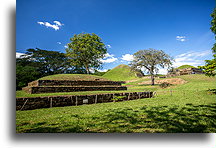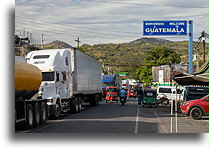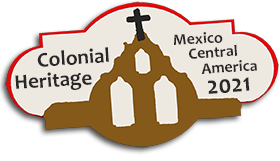Small Maya City
November 26
On our way through El Salvador, we entered an ancient region once ruled by the Maya. We have crossed the symbolic southern border of Mesoamerica. The small archaeological site we visited had very limited studies so far. It is known that the occupation in this region began around 900 BC and was interrupted by a volcanic eruption in AD 250. The city prospered again between AD 600 and 900. At that time, San Andrés was the local capital with a population of probably 12,000 residents. The city had trade connections with other important Maya centers of power, such as Tikal and Caracol. but the strongest ties existed with Copán.


Only two pyramids and one ceremonial terrasse in San Andrés have been partially reconstructed. You need to use the imagination to see the vast expanse of the old city. Current archeological evidence indicates that city’s ceremonial center had a large acropolis—part of the city exclusively for upper class—and was divided into two separate political seats. All the major structures were surrounded by a residential area.
It is funny that due to Covid-19 restrictions, local regulations limited our time to visit San Andrés to 45 minutes, including no more than 5 minutes for a bathroom visit.


An hour later we were in San Cristobal, a border town with Guatemala. Lots of trucks blocked the road, but we managed to pass them. This border took us "only" 1 hour and 15 minutes. It was early afternoon and we decided to go to Honduras. After another three hours of driving through the mountains, we found ourselves at the border crossing, our fourth border in the last 36 hours. To our surprise, the barrier was closed. We were informed that the border closes at 6 pm. This was unexpected, we were at the gate 5 minutes before 6 o'clock. There was nothing to be done about it, all the staff were just going home. Another hour of driving back and we were at a nice place to camp for the night. It was a campsite just outside La Caballeriza Hotel in Guatemala.










